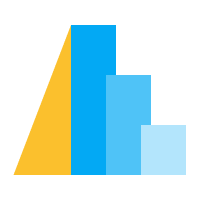altair.SizeDatum#
- class altair.SizeDatum(datum, bandPosition=Undefined, condition=Undefined, title=Undefined, type=Undefined, **kwds)#
SizeDatum schema wrapper.
- Parameters:
- bandPositionfloat
Relative position on a band of a stacked, binned, time unit, or band scale. For example, the marks will be positioned at the beginning of the band if set to
0, and at the middle of the band if set to0.5.- conditiondict,
ConditionalValueDefnumberExprRef,ConditionalParameterValueDefnumberExprRef,ConditionalPredicateValueDefnumberExprRef, Sequence[dict,ConditionalValueDefnumberExprRef,ConditionalParameterValueDefnumberExprRef,ConditionalPredicateValueDefnumberExprRef] One or more value definition(s) with a parameter or a test predicate.
Note: A field definition’s
conditionproperty can only contain conditional value definitions since Vega-Lite only allows at most one encoded field per encoding channel.- datumstr, bool, dict, float,
ExprRef,DateTime,RepeatRef,PrimitiveValue, None A constant value in data domain.
- titlestr,
Text, Sequence[str], None A title for the field. If
null, the title will be removed.Default value: derived from the field’s name and transformation function (
aggregate,binandtimeUnit). If the field has an aggregate function, the function is displayed as part of the title (e.g.,"Sum of Profit"). If the field is binned or has a time unit applied, the applied function is shown in parentheses (e.g.,"Profit (binned)","Transaction Date (year-month)"). Otherwise, the title is simply the field name.Notes:
1) You can customize the default field title format by providing the fieldTitle property in the config or fieldTitle function via the compile function’s options.
2) If both field definition’s
titleand axis, header, or legendtitleare defined, axis/header/legend title will be used.- type
Type, Literal[‘quantitative’, ‘ordinal’, ‘temporal’, ‘nominal’, ‘geojson’] The type of measurement (
"quantitative","temporal","ordinal", or"nominal") for the encoded field or constant value (datum). It can also be a"geojson"type for encoding ‘geoshape’.Vega-Lite automatically infers data types in many cases as discussed below. However, type is required for a field if: (1) the field is not nominal and the field encoding has no specified
aggregate(exceptargminandargmax),bin, scale type, customsortorder, nortimeUnitor (2) if you wish to use an ordinal scale for a field withbinortimeUnit.Default value:
1) For a data
field,"nominal"is the default data type unless the field encoding hasaggregate,channel,bin, scale type,sort, ortimeUnitthat satisfies the following criteria:"quantitative"is the default type if (1) the encoded field containsbinoraggregateexcept"argmin"and"argmax", (2) the encoding channel islatitudeorlongitudechannel or (3) if the specified scale type is a quantitative scale."temporal"is the default type if (1) the encoded field containstimeUnitor (2) the specified scale type is a time or utc scale"ordinal"is the default type if (1) the encoded field contains a custom sort order, (2) the specified scale type is an ordinal/point/band scale, or (3) the encoding channel isorder.
For a constant value in data domain (
datum):
"quantitative"if the datum is a number"nominal"if the datum is a string"temporal"if the datum is a date time object
Note:
Data
typedescribes the semantics of the data rather than the primitive data types (number, string, etc.). The same primitive data type can have different types of measurement. For example, numeric data can represent quantitative, ordinal, or nominal data.Data values for a temporal field can be either a date-time string (e.g.,
"2015-03-07 12:32:17","17:01","2015-03-16"."2015") or a timestamp number (e.g.,1552199579097).When using with bin, the
typeproperty can be either"quantitative"(for using a linear bin scale) or “ordinal” (for using an ordinal bin scale).When using with timeUnit, the
typeproperty can be either"temporal"(default, for using a temporal scale) or “ordinal” (for using an ordinal scale).When using with aggregate, the
typeproperty refers to the post-aggregation data type. For example, we can calculate countdistinctof a categorical field"cat"using{"aggregate": "distinct", "field": "cat"}. The"type"of the aggregate output is"quantitative".Secondary channels (e.g.,
x2,y2,xError,yError) do not havetypeas they must have exactly the same type as their primary channels (e.g.,x,y).
See also: type documentation.
- __init__(datum, bandPosition=Undefined, condition=Undefined, title=Undefined, type=Undefined, **kwds)#
Methods
__init__(datum[, bandPosition, condition, ...])copy([deep, ignore])Return a copy of the object.
from_dict(dct[, validate])Construct class from a dictionary representation.
from_json(json_string[, validate])Instantiate the object from a valid JSON string.
resolve_references([schema])Resolve references in the context of this object's schema or root schema.
to_dict([validate, ignore, context])Return a dictionary representation of the object.
to_json([validate, indent, sort_keys, ...])Emit the JSON representation for this object as a string.
validate(instance[, schema])Validate the instance against the class schema in the context of the rootschema.
validate_property(name, value[, schema])Validate a property against property schema in the context of the rootschema.
Attributes
bandPositionRelative position on a band of a stacked, binned, time unit, or band scale.
conditionOne or more value definition(s) with [a parameter or a test predicate](https://vega.github.io/vega-lite/docs/condition.html).
datumA constant value in data domain.
titleTitleParams schema wrapper.
typeType schema wrapper.
